CarEdge saved me over 4,500 dollars on a brand new Honda Pilot. I can't say thank you enough.
Price intelligence
Find a wide range of vehicle listings with market insights on new and used listings near you.


Help us personalize your CarEdge experience — it only takes a second.
Your answers help us personalize your CarEdge journey — we’ll follow up with tips and next steps that match your buying timeline.

What do you think 2024 will bring? Hopefully next year will be less exciting than the past few. Already in this decade, we’ve seen a pandemic cause a freefall in car sales, followed by a severe supply shortage that sent prices through the roof, only for car prices to stabilize at a new, much higher normal. Will car prices drop in 2024? Is there relief in sight for buyers facing high interest rates and slim supply? CarEdge co-founder Ray Shefska, with his four decades of auto industry insight, shares his car market predictions for 2024. Let’s explore.
As much as we’d love to be wrong, it’s very likely that both new and used car prices will remain high in 2024. CarEdge co-founder Ray Shefska recently shared his thoughts on the most likely scenarios in the short-term.
All things considered, Ray says that continued high prices are all but guaranteed. When automakers see an opportunity for ‘price adjustments’, they’re not going to pass it up.
“I don’t foresee better pricing soon with various factors at play. For instance, the ongoing UAW strike is pushing labor costs up, despite them comprising only five percent of total vehicle production costs. This increase will inevitably lead manufacturers to adjust their MSRPs, providing a convenient excuse for doing so.”
Multiple factors are converging that lend to this thinking.
For new cars, it’s fair to blame high prices on the manufacturers. Despite consumer demands for more affordable options, OEMs keep producing over-priced SUVs and trucks. Gone are the $30,000 base models.
The continuous production of high-margin vehicles by manufacturers, which are typically priced out of reach for the average consumer, is a losing strategy in our eyes. Nevertheless, with $100,000 trucks and glamorous SUVs coming out of American and foreign automakers alike, this is the road we’re headed down.
“I’m skeptical about the auto industry having a stellar year in 2024, considering that a significant percentage of consumers feel they can’t afford new cars. Manufacturers are increasingly relying on fewer buyers to pay higher prices in order to turn a profit. The average buyer does not benefit in this situation,” said Ray.
This is all in addition to the costly EVs that are filling up dealer lots.
Here’s where it gets interesting. The continued production of high-margin vehicles is primarily motivated by the manufacturers’ need to fund their ventures and investments into the electric vehicle (EV) market. Unlike Tesla, the likes of GM, Ford and Stellantis are still figuring out how to make mainstream EVs that can turn a profit.
This isn’t merely hearsay. In Ford’s earnings report, executives noted the continued profitability of their internal combustion-powered lineup, but also the financial woes of their EV division. Ford expects to lose $4.5 billion on EVs by 2023’s end, despite overall profits rising. The ‘Blue Oval’ has $100,000 trucks to thank for that.

Cash will remain king in 2024. As of October 2023, the average new car loan APR is north of 9%. Used car loans are even more expensive, with the average APR at 14%. See the latest monthly payment statistics here.
The Federal Reserve has stated that rates will remain near current levels through at least the first half of 2024. With that said, auto loan interest rates are forecasted to remain high in 2024.
The tandem of soaring prices and stiff interest rates creates a scenario where affordability takes a significant hit. It’s the sad truth that some buyers will be priced out of the market as a result.
The lowest auto loan rates will continue to be found with manufacturer incentives. New car inventory has been steadily rising, leading to low APR offers from some automakers. Zero percent financing is still possible if you shop for deals, and APRs under 3% are quite common.
See this month’s manufacturer incentives, featuring the lowest APR offers.
As we gaze into the automotive crystal ball for the forthcoming year, a rather annoying trend appears to hold its ground: the significant shortage in the used car market is on track to persist in 2024.
When it comes to used car prices, supply and demand drive the market. In 2023 and 2024, it’s the reduced supply of used cars that ensures prices will remain elevated. Used car prices rose 36% in 2021, only to fall 7% the year after. As 2023 comes to a close, it looks like used car prices will end the year about where they began 12 months ago.
The roots of the used car shortage can be traced back to the supply chain problems of 2021-2022. The production of new cars slowed, and sales dropped like a rock. Fewer cars sold in 2021-2022 resulted in fewer trade-ins and subsequently, a tightened supply of used vehicles. With approximately 15 million new cars that were initially scheduled for production globally never seeing the light of day, the ripple effect has led to a lasting shortage of used cars.
This is not a short-term hiccup. Industry insiders like Ray predict that the scarcity of pre-owned vehicles is likely to extend through this decade.
Ray emphasized the connection between today’s new car market and the shortage of used cars that he expects to see continue in 2024. “Manufacturers aren’t motivated to produce vehicles under $30,000 since they need high profit margins to support their EV initiatives. Production will continue to focus on high-margin vehicles, not affordable models and trims. The problem is that these expensive new cars are accessible only to a small fraction of buyers. Ultimately, more buyers will turn to the used car market for prices they can afford, no matter how inflated used car values may be.”
Consumers in the market for used cars should understand that higher prices and limited options will be around for a while. See the latest used car price date, courtesy of Black Book:
Used Car Price Trends for 2023 (Updated Weekly)
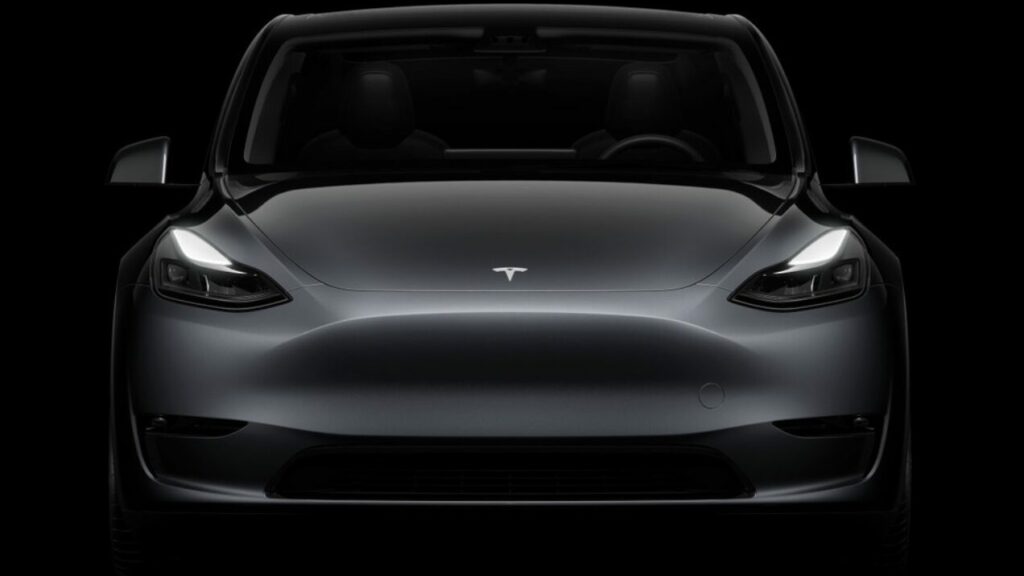
Legacy automakers have invested over half a trillion dollars in electrifying their lineups. The sad reality is that not a single one of them is anywhere close to Tesla in EV market share.
As of last check, 60% of electric vehicles sold in America were Tesla models.
In 2024, we expect Tesla to continue to dominate. Even if Tesla EV market share drops to 40-50%, that’s still domination by anyone’s standards. Tesla invested so heavily in mastering low-cost production that it will continue to have an advantage over Ford, GM, and the rest of the gang.
Tesla’s EV dominance increasingly puts legacy manufacturers such as Ford, General Motors, and Stellantis in a precarious position. This will become much more evident in 2024. How so? Some BIG name, long-awaited EVs will arrive from legacy brands. Here are just a few…
If the above-mentioned electric models fail to attract large numbers of buyers, it will become crystal clear that legacy automakers have a BIG EV problem on their hands.
Traditional automakers are bracing for a turbulent period ahead, grappling with the dual headwinds of rising manufacturing costs and their struggling EV divisions. By the end of 2024, we’ll have learned a lot about the long-term prospects for legacy EVs. It’s possible that Tesla, once the laughing stock of Detroit executives, will indeed have the last laugh.
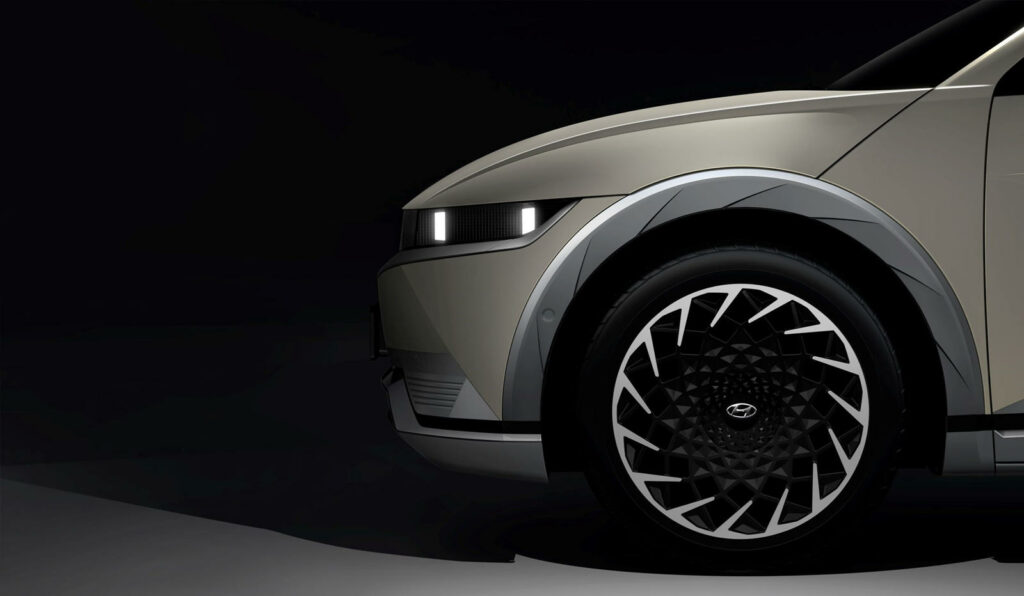
The automotive industry in 2024 faces a confluence of challenges, some of which are yet unknown. Aside from the variables discussed here, there are other wildcard scenarios that have the potential to disrupt market dynamics.
The UAW strike is over, but the negotiated agreement may force new car prices higher as OEMs spend more on manufacturing costs. As CarEdge’s Ray Shefska has noted, labor costs are a small fraction of total manufacturing expenses. However, that won’t keep automakers from using employee raises as an excuse for MSRP hikes.
The Detroit ‘Big Three’, General Motors, Ford, and Stellantis, are already at a disadvantage in the growing EV market. Rising labor costs and shaky supply chains threaten to wipe away what progress they have made.
An even more important unknown is the health of the global economy in 2024. Most experts agree that there’s only a slight possibility of an economic recession, but it’s a non-zero chance.
Here’s how economic recession impacts car prices.
This economic uncertainty is further exacerbated by conflicts overseas, and a looming election year here at home. Globally, there are dozens of situations that could, in theory, boil over into the automotive market. For starters, there’s the volatile situation in the Middle East, the simmering tensions in Ukraine, and the precarious state of affairs surrounding Taiwan. Each of these geopolitical hotspots has the potential to inject uncertainty into the global markets, creating ripple effects that could inevitably impact the automotive industry.
Moreover, with 2024 being an election year in the United States, the industry is bracing for potential policy shifts and market reactions that often accompany electoral cycles, adding yet another layer of unpredictability to an already uncertain landscape. These combined factors make the outlook for the auto industry in 2024 particularly challenging to forecast.

Ready to outsmart the dealerships? Download your 100% free car buying cheat sheets today. From negotiating a deal to leasing a car the smart way, it’s all available for instant download. Get your cheat sheets today!

Why is leasing a car such an attractive option right now? The average auto loan rate has eclipsed 9%, adding serious money to monthly payments for those who decide to buy. Leasing not only holds monthly costs down, it offers an avenue for drivers to always have the latest and greatest cars. This month, Hyundai lease deals represent some of the best offers in the car market. Let’s take a look at Hyundai’s top lease offerings, from sedans and SUVs to the brand’s popular EVs.
All leases are for 36-month contracts.
Hyundai Elantra: $219 per month with $3,499 due

The Elantra epitomizes efficiency with its comfortable seating and advanced safety features. Its sleek design paired with a robust engine delivers both aesthetics and performance. The Elantra achieves 42 miles per gallon on the highway, yet is powered by 201 horsepower. Plus, an Elantra Hybrid is available without breaking the bank.
There’s currently a 43-day supply of new Elantra’s nationwide, which is below average. This indicates less negotiability when buying, making leasing a more attractive option.
Browse Elantra listings with local market price data.
Hyundai Sonata: $289 per month with $3,499 due

Sonata offers a more spacious interior, and cutting-edge infotainment system. If the Elantra didn’t quite cut it for you, chances are the Sonata just might be what you’re looking for. With impressive fuel efficiency (up to 37 miles per gallon), it is ideal for daily commuting and long drives alike. A more efficient Sonata Hybrid is now on the market too.
There’s currently a 76-day supply of new Sonata’s nationwide, which is above the market average. This means buyers will have more negotiability, but also that manufacturers will have willingness to lease on competitive terms.
Browse Sonata listings with local market price data.
Hyundai IONIQ 6: $349 per month with $4,999 due
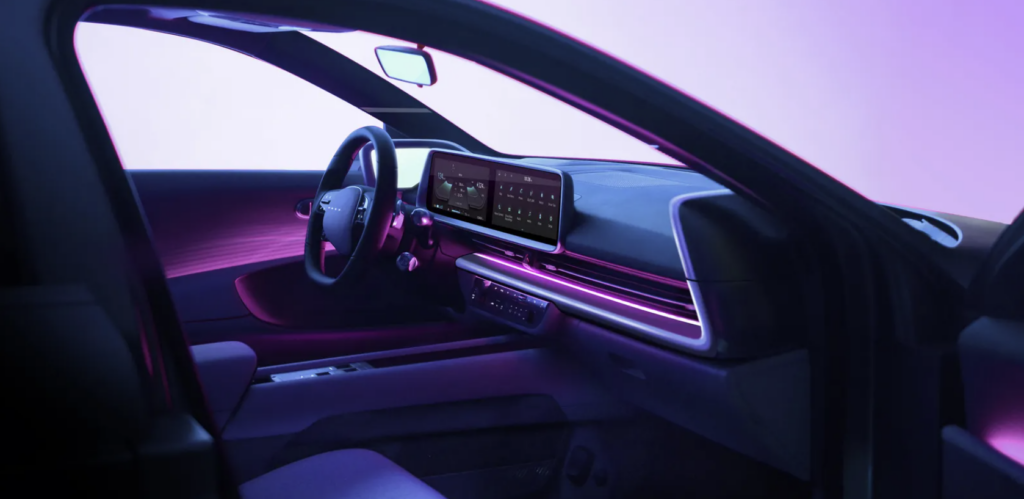
The IONIQ 6 lease now comes with a $7,500 lease discount. Hyundai launched this incentive to make up for the loss of the federal EV tax credit earlier this year. The IONIQ 6 ties the Tesla Model 3 for the title of most capable electric sedan under $50,000. With up to 361 miles of range and fast charging times that beat Tesla, you can’t go wrong. It’s laden with innovative technology, and a smoother ride than you’ll find in the Model 3.
There’s currently an 83-day supply of IONIQ 6’s nationwide, which is well above the market average. This means buyers will have more negotiability, but also that manufacturers will have willingness to lease on competitive terms.
Browse IONIQ 6 listings with local market price data.
Hyundai Venue: $209 per month with $3,499 due

The Hyundai Venue is the most affordable SUV in America. This petite model is the definition of a compact SUV, but that’s not necessarily a bad thing. Drivers report that it’s perfect for city driving, and offers tremendous value for such a low price (MSRP starts under $20,000). With advanced safety features, it provides a secure and enjoyable driving experience.
There’s currently a 37-day supply of new Venue’s nationwide, which is well below average. This indicates less negotiability when buying, making leasing a more attractive option.
Browse Venue listings with local market data.
Hyundai Kona: $292 per month with $4,012 due

The Kona is completely redesigned for the 2024 model year, but not everyone will agree that it looks better. The Kona is the next step up from the Venue in terms of size and features. This small SUV provides ample cargo space for most needs, making it suitable for both adventures and daily errands.
The Kona’s fuel economy is rated at 29 MPG in the city and 34 MPG on the highway, but add all-wheel drive and those numbers drop to 24 in the city and 29 on the highway. A fully-electric Kona is available, but it’s overpriced. For the same cost, you could buy or lease a faster-charging, longer-range Tesla Model 3 or Volkswagen ID.4.
There’s currently an 88-day supply of Kona’s nationwide, which is well above the market average. This means buyers will have more negotiability, but also that manufacturers will have willingness to lease on competitive terms. This is likely due to the impressive value that Hyundai’s other SUV models offer for a similar price.
Browse Kona listings with local market data.
Hyundai Santa Fe: $269 per month with $3,999 due

Last call for the Santa Fe before it undergoes a polarizing update! These relatively normal looks will be gone in a few months.
The Santa Fe is the real deal for those wanting a true SUV. Including 72 square feet of cargo area with the seats down, this is a capable family vehicle at a budget-friendly price. With 26 miles per gallon in combined city/highway driving, it’s not exactly fuel efficient. All-wheel drive lowers that even further.
The Santa Fe is the third-highest ranked Hyundai model in terms of reliability. See the most reliable car brands, as ranked by Consumer Reports. Hyundai has some work to do!
There’s currently a 59-day supply of new Santa Fe’s nationwide, which is about average in today’s car market. This indicates fair negotiability when buying, but leasing is still a good option.
Browse Santa Fe listings with local market data.
Hyundai Tucson: $331 per month with $4,011 due
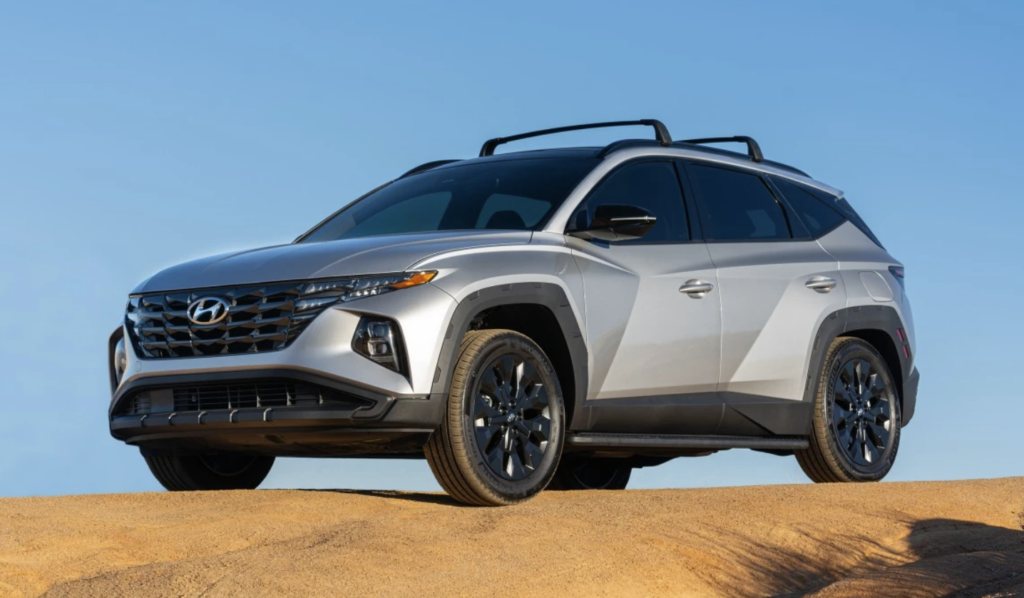
The Tucson captivates with its bold design and advanced tech features. Despite appearing slightly smaller than the Santa Fe, the Tucson actually has a bit more cargo space. It also gets better fuel economy, at 26 MPG city and 33 MPG highway. Its efficient powertrain and safety features make it a top choice for families.
There’s currently a 64-day supply of new Hyundai Tucson’s nationwide, which is about average in today’s car market. Leasing is still a good option, but offers may become even more competitive next month.
Browse Tucson listings with local market data.
Hyundai Palisade: $395 per month with $3,999 due

Since launching in 2018, the Palisade has quickly gained a large fanbase. For those wanting a larger SUV without having to go the way of the Chevy Tahoe or Ford Explorer, the Palisade and Kia’s Telluride are the perfect fit. Palisade offers a luxurious driving experience with its high-end interior materials and spacious three-row seating. Its robust V6 engine ensures power on the road.
When it comes to value for the money, leasing the Palisade for less than $400/month is amazing.
There’s currently a 74-day supply of new Hyundai Palisade’s nationwide, which is about average in today’s car market. Leasing is still a good option.
Browse Palisade listings with local market data.
Hyundai IONIQ 5: $399 per month with $4,999 due
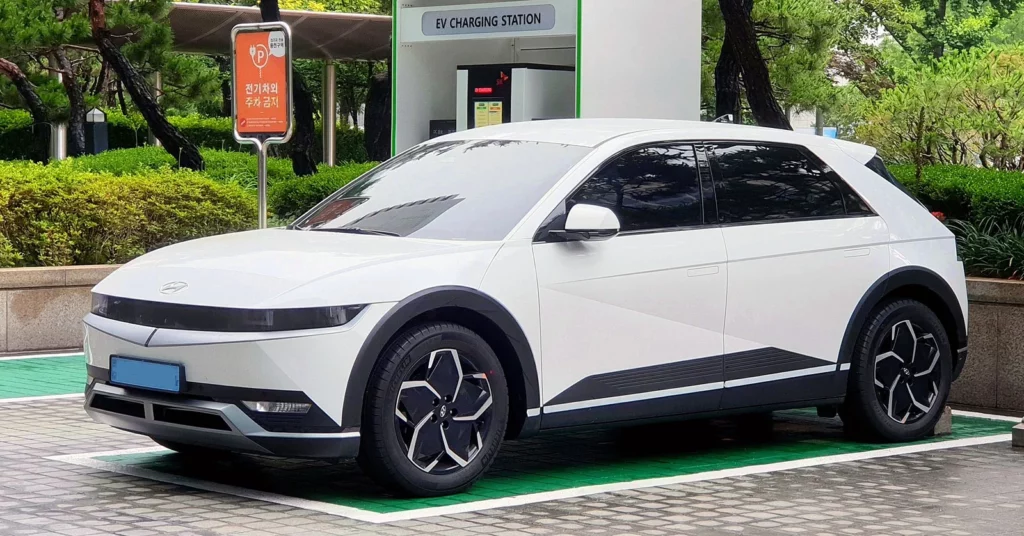
IONIQ 5 is a vision of the future, with its unique design and advanced electric powertrain. Nothing looks quite like it on the road, but there’s more to this EV than sharp looks.
With 303 miles of range (266 miles with all-wheel drive) and ultra-fast charge times, the IONIQ 5 is an award-winning vehicle worth a test drive. The only reason it’s not a top-seller? The IONIQ 5 does not qualify for the federal EV tax credit. Hyundai is offering a workaround by including a $7,500 discount on IONIQ 5 leases. That’s a sweet deal!
There’s currently a 102-day supply of IONIQ 5’s nationwide, which is well above the market average. This means buyers will have more negotiability, but also that manufacturers will have willingness to lease on competitive terms.
Browse IONIQ 5 listings with local market data.
Hyundai Santa Cruz: $331 per month with $3,699 due
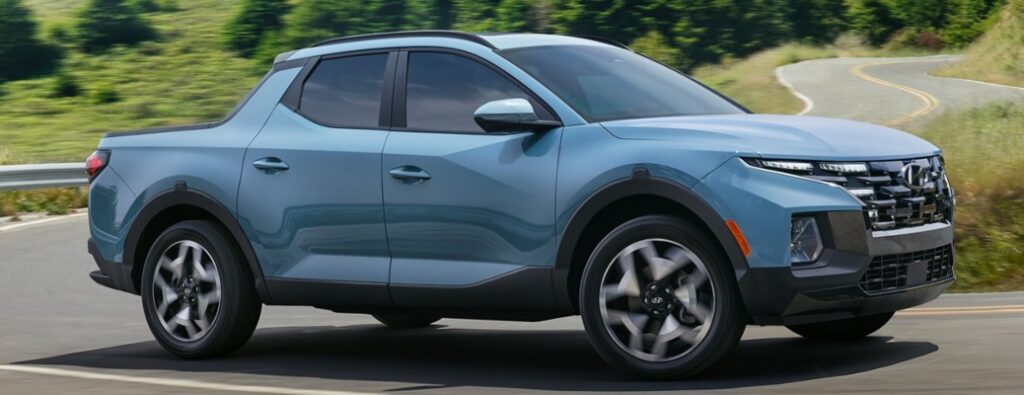
The Santa Cruz is characterized by its versatile utility, functioning as both an SUV and a pickup. Hyundai calls it a Sport Adventure Vehicle. Tow up to 5,000 pounds with HTRAC all-wheel drive. On the downside, the bed is just 48 inches long with the tailgate up.
There’s currently a 88-day supply of Santa Cruz’s nationwide, which is well above the market average. This means buyers will have more negotiability, but also that manufacturers will have willingness to lease on competitive terms. I suspect that many buyers opt for either an SUV OR a truck, not something that’s oddly in between.
Browse Santa Cruz listings with local market data.
Leasing is simple on the surface, but to secure the best deal, it’s important to be familiar with the contract you’re about to sign. Our team of Car Coaches created this resource to help you take control of your deal:
Understanding Your Auto Lease Contract: A Comprehensive Guide
Hyundai does have attractive lease offers, but so do some of the competition.
Check out the best lease offers from every automaker this month.
Looking for help with your car deal? Our team is ready to assist! With expert advice and personalized guidance, we ensure you not only get the best deal, but one that you’ll be proud of. Reach out to a CarEdge Coach today, and let’s find your next car at a price you can afford!!
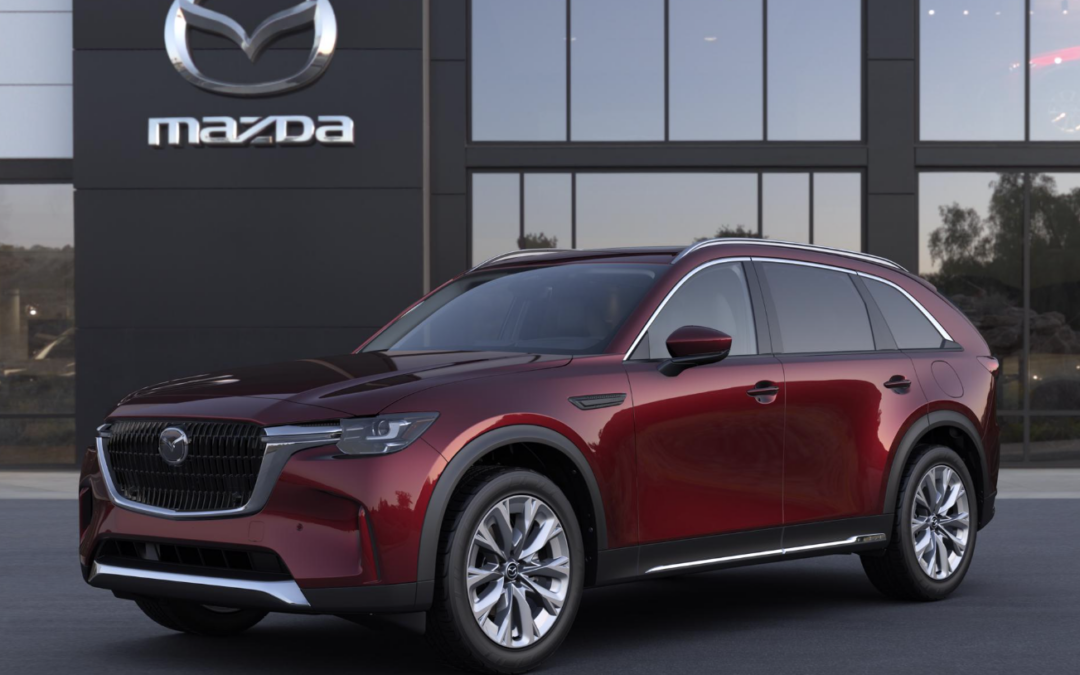

In the worst of the pandemic downturn, all but three car brands saw decreases in sales. One of the brands to grow against all odds was Mazda. Why are more drivers choosing Mazda, and will the brand that relies on conquests to grow be able to keep up the pace? How do Mazda deals compare to offers from Honda and others? Let’s take a look at why Mazda’s reliability, pricing and brand reputation are all at the top of the game right now.
In 2022, Mazda sold 294,908 vehicles in the US, with the CX-5, CX-30, and CX-9 being the crowd favorites. Despite witnessing an 11% sales drop in 2022, Mazda’s sales trajectory from 2019-2021 was overwhelmingly upward. In contrast, Honda experienced a substantial 33% sales decrease in the same year, while Toyota saw a 9% reduction. The significant sales decline of Japanese automakers, including Honda, is primarily attributed to persistent supply chain issues in the first half of 2022.
Let’s be clear: Mazda is no GM or Ford when it comes to volume. Last year, Mazda had just 2.1% of market share in U.S. light duty vehicle sales. But it’s the growth that counts. Back in 2017, Mazda’s market share was 1.7%. It’s not exactly quick growth, but it’s an upward trend that continues to this day.
There’s a lot to love about Mazda’s number one strength: reliability. Mazda has earned a spot in the list of the 10 Most Reliable Brands for over a decade, yet the brand doesn’t have the same household reputation for quality that Toyota and Honda enjoy. We think it’s time to change that, as Mazda has earned a top-tier reputation in today’s auto market.
In the most recent Consumer Reports reliability ranking, Mazda is in 4th place, just above Honda in 5th. The year prior, Mazda was in second place, while Honda was in 5th. In 2020, Mazda shocked the industry when it scored first in reliability, beating even Toyota.
This year, Toyota and BMW (to everyone’s surprise) knocked Mazda down a few spots. Mazda’s overall brand scored 65, while the reliability leader Toyota scored 72 points. Honda scored 62 points. In case you’re wondering, no brand ever scores close to 100, although the ratings are officially on a 100-point scale.
What are the most reliable Mazda models? According to Consumer Report, the most reliable Mazda cars and SUVs are the MX-5 Miata, CX-5, Mazda 3, CX-9 and CX-30. Here’s how they scored.
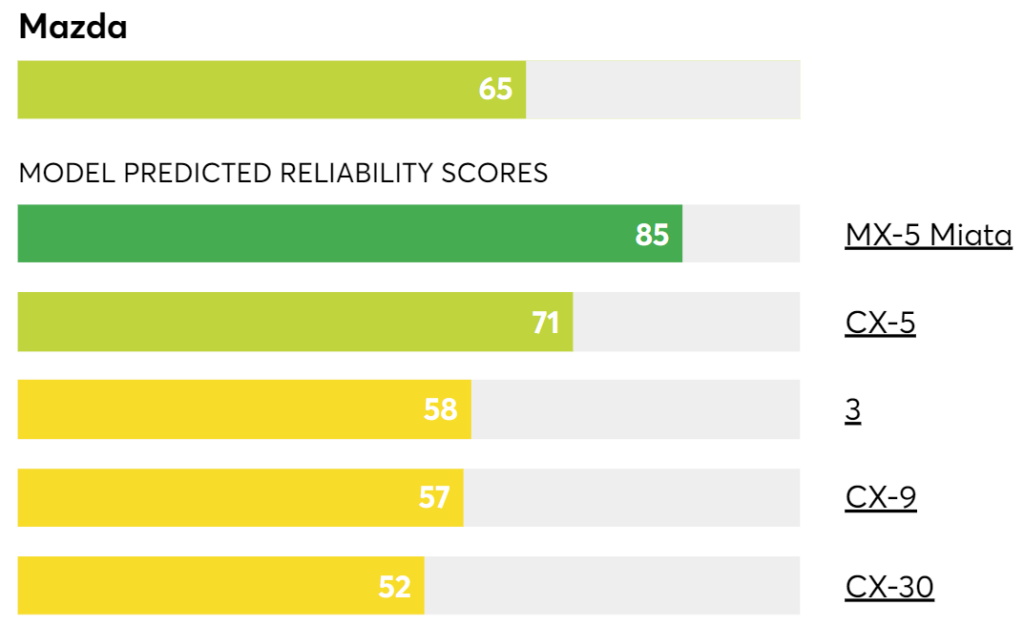
Bargain-conscious car buyers should seriously start paying closer attention to local inventory numbers. Mazda currently has 106 days of inventory nationwide, with 84,876 new cars for sale in America. Honda has only 34 days of supply, with 96,517 vehicles for sale. This gives Mazda shoppers a huge advantage when it comes to negotiating prices.
Here’s inventory for the top-selling Mazda models
| Make | Model | Market Day Supply | Total For Sale |
|---|---|---|---|
| Mazda | CX-5 | 87 | 29,993 |
| Mazda | CX-30 | 106 | 19,258 |
| Mazda | CX-9 | 41 | 158 (discontinued) |
| Mazda | CX-50 | 113 | 8,848 |
| Mazda | Mazda3 | 143 | 10,256 |
See local Mazda inventory and price trends with CarEdge Data.
Inventory is one of the primary drivers of new car negotiability. Mazda has over three times the inventory of Honda. Buyers are scrambling for any new Honda that shows up on dealer lots, but Mazda shoppers are greeted with plenty of options to choose from, inherently reducing the stress of car shopping. But does Mazda have any great deals? Let’s find out.
This month, Mazda is offering some compelling finance and lease options. In October, Mazda is offering enticing deals on various models. For the 2024 Mazda CX-5 Turbo, 2024 CX-90, and the 2023 MX-5 Miata, customers can take advantage of a low 0.9% APR for 36 months. Most other 2023 Mazda models are available with a 2.9% APR for 36 months, while most 2024 models come with a 3.9% APR for the same period.
Mazda’s lease deals are attractive too. Lease the CX-5 for $379/month for 36 months with just $2,999 due at signing. That’s not a bad deal considering how much drivers love the CX-5. The similar CX-30 lease starts at $301/month for 36 months with $2,999 due.
The all-new CX-90 is a larger Mazda SUV that the automaker has been promoting heavily in recent months. This more luxurious Mazda’s lease offer starts at $474/month for 36 months with $4,999 due. Yes it’s more expensive, but the CX-90 has 25% more cargo area than the CX-5.
All in all, these lease offers are worth considering for budget-minded shoppers who value reliability and modern amenities.
It is plausible to consider Mazda as the contemporary equivalent of Honda in the current auto market for some consumers. With its impressive reliability, competitive pricing, and growing brand reputation, Mazda is not only drawing attention but is also emerging as a preferred choice for many. Its robust sales, even in challenging times, further underscore its rising popularity and the value it offers to customers in the automotive landscape.
Plus, Mazda actually has plenty of inventory on dealer lots right now. That is a reason to celebrate, because as we like to say: more inventory means more deals.
Looking for car buying help? Our team of Car Coaches is ready to assist! From DIY market data to personalized, 1:1 car buying help, the CarEdge Team is here for you. Learn more about our money-saving services today.
Check out these member success stories to see how much drivers like you are saving!

October is turning into a great month for new car incentives, especially for fans of particular brands. Despite rising interest rates and the chronic affordability crisis, offers of low APRs and affordable leases are here for a limited time. Here’s a look at the best car deals in October.
Seeking to finance your new vehicle with a low interest rate? Given that the average APR for new car loans is now over 9%, securing a low rate isn’t easy. However, these brands are stepping up to the plate with tantalizing APR offers this October. Be sure to check offers for your ZIP code, as these represent the latest new car incentives on the East Coast.
Slash Your Car Loan Interest: Expert Tips for New and Used Car Buyers

In a serious effort to attract buyers, the following models are all advertised for 0% APR in October: Chevrolet Silverado 1500, 2023 Nissan Altima, and Nissan Rogue.
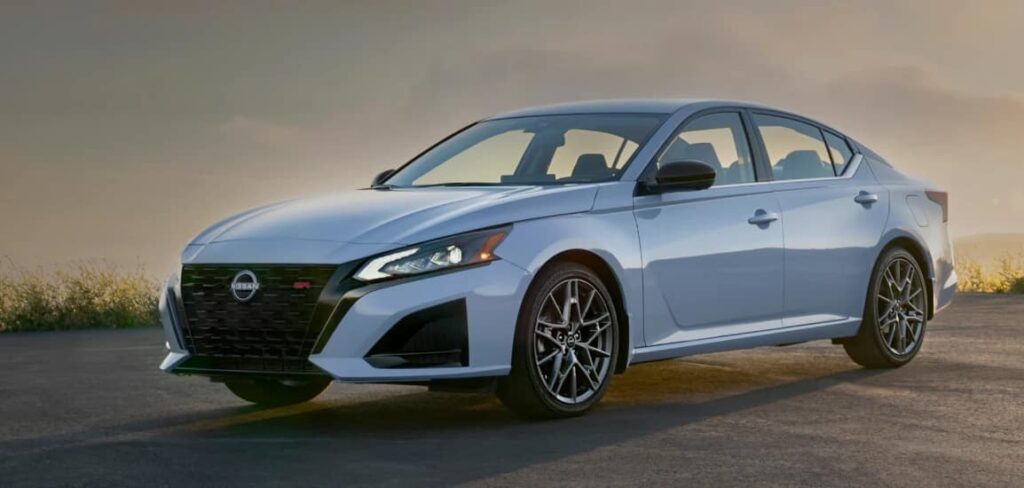
Honda Ridgeline, Hyundai IONIQ 5, IONIQ 6, Kia EV6, Niro EV, 2024 Nissan Altima, and Subaru Solterra EV: Get your hands on these models with 0.9% APR for qualified buyers. The best of the batch is definitely the Altima, one of the top-selling sedans today.

Nissan Armada, Buick Enclave, Buick Envision, and Toyota bZ4X: These models are available with a 1.9% APR. Those considering Toyota’s first EV, the bZ4X, should be aware that charging is slower than average, especially for the all-wheel drive version. We think the stand-out deals here are from Buick.

Chevrolet Trax, Trailblazer, Equinox, Blazer, and Traverse: Secure any of these sought-after Chevy SUVs with an APR as low as 2.1% for well-qualified buyers.
Here’s every automaker’s best financing offers this month.
How to Finance a Car Like a Pro: The Ultimate Auto Financing Cheat Sheet

Cadillac is providing up to $1,500 cash incentives on the XT4, XT5, and XT6.
Chevrolet offers no payments for 90 days plus a $750 cash allowance on the Silverado 1500. Dodge is not to be outdone with up to $5,500 cash allowance on the Durango and a $2,000 cash offer on both the Challenger and Charger.
If you’re in the market for a Kia or Hyundai EV, there are great cash offers in the form of lease discounts.
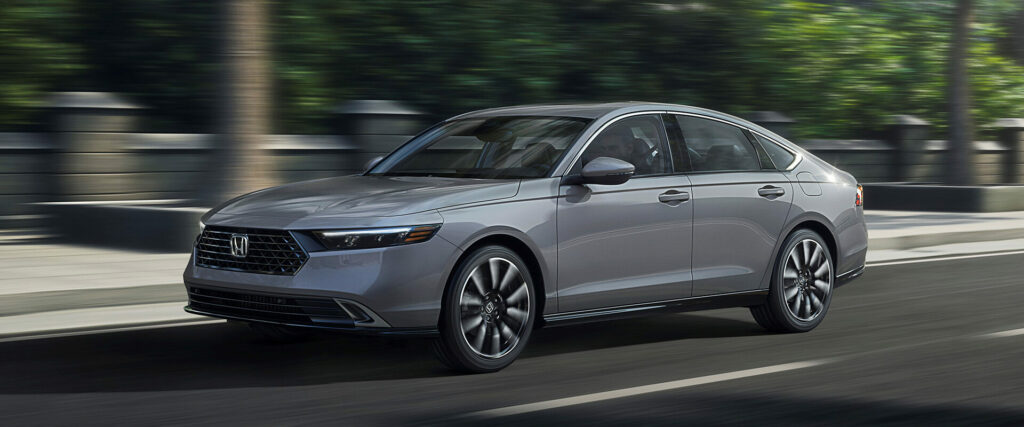
When it comes to new car incentives, more shoppers are considering a lease as MSRPs soar ever higher. These are the best lease deals this month.
With the Hyundai Elantra at $219 per month with $3,499 due and the Honda Accord at $299 per month with $3,299 due, sedan lovers have attractive options.
The Chevrolet Equinox at $299 per month for 24 months with $2,339 due and the GMC Terrain at $189 per month for 24 months with $4,879 due provide compelling offers for families.
The hot-selling Hyundai Santa Fe is available for $269 per month for 36 months with $3,999 due.
The 2024 Buick Envista is a subcompact SUV with by far the most modern design of any Buick in ages. Lease an Envista for as low as $199/month for 24 months with $3,396 due.
For truck fans, the Toyota Tacoma at $364 per month for 36 months with $3,064 due is a strong contender.
Those in need of a larger pickup truck will be fans of the Silverado 1500 Crew Cab LT, which can be leased for just $399/month for 24 months with $5,129 due.

Electric vehicle enthusiasts have the Tesla Model 3 rear-wheel drive at $399 per month for 36 months with $5,594 due as a prime option. Tesla EVs do qualify for the federal tax credit, so purchasing is worth considering too. The Model Y lease for $569 per month for 36 months with $5,804 due is an amazing value, but again, prices have dropped so far that buying is arguably a better option.
Those looking for a non-Tesla are likely considering the award-winning Hyundai IONIQ 5 and its sedan sibling, the IONIQ 6. This month, Hyundai is offering the IONIQ 6 for $349/month for 36 months with $4,999 due. The larger IONIQ 5 can be leased for $399/month for 36 months with $4,999 due at signing. Hyundai says that these terms include a $7,500 discount that is meant to replace the federal EV tax credit.
As we transition into the year-end season with November and December car sales on the horizon, anticipate a surge in enticing new car incentives from more automakers, introducing not only low APR offers but also compelling lease deals. The end of the year is always the best time to buy, and this year will be no different.
If the vehicle on your wish list didn’t make the cut in this month’s selection of the best deals, don’t fret. Patience, in this scenario, will indeed be a virtue that will be handsomely rewarded.
Ready to work 1:1 with a car buying pro? Learn more about CarEdge Coach, your path to the most savings and the least stress. Prefer a DIY path to car buying? With CarEdge Data, you have the tools at your disposal to find the best deals and identify opportunities for negotiation.
And of course, we have hundreds of 100% free car buying guides just a click away. Don’t forget to connect with the CarEdge family over on our Community Forum.

The National Highway Traffic Safety Administration (NHTSA) has intensified and broadened its inquiry into alleged “catastrophic engine failures” in Ford Broncos. The expanded investigation now encompasses over 700,000 vehicles across the Ford and Lincoln brands.
Initially, in July 2022, the NHTSA began investigating more than 25,000 2021 Broncos fitted with 2.7-liter EcoBoost engines. The probe was initiated in response to three petitions for a defect investigation and 26 complaints pertaining to unexpected losses of power during highway travel without the possibility of restarting.
These power losses were attributed to severe engine failures due to malfunctioning engine valves. Friday’s update from the NHTSA reveals the upgrade of this probe to an engineering analysis. This update followed Ford’s submission of 328 customer complaints, 487 warranty claims, and 809 engine exchanges involving 2021-22 models of Ford Bronco, Edge, Explorer, and F-150, as well as Lincoln Aviator and Nautilus vehicles. The said vehicles were equipped either with 2.7-liter or 3.0-liter EcoBoost engines.
Separately, Ford is under investigation for mishandling recalls. Ford also leads in recalls, with 44 issued already this year.
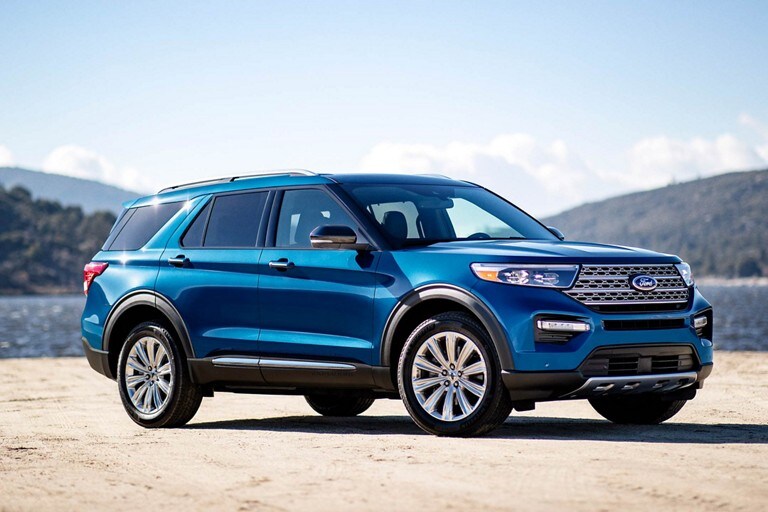
During the investigation, multiple factors were identified that could cause the engine’s intake valves to fracture, leading to catastrophic engine failures and loss of power. Ford acknowledged the issues, stating that vehicles with fractured intake valves typically require complete engine replacements.
Interestingly, Ford disclosed that the defective intake valves, made from a particular alloy named Silochrome Lite, tend to fail early. This alloy can become extremely hard and brittle if overheated during the component’s machining process. In response, Ford implemented a design modification in October 2021, changing the valve material to an alloy less prone to overheating.
According to a document detailing the investigation, the majority of these valve failures have likely already occurred. Nevertheless, the NHTSA has decided to advance the investigation to thoroughly assess the scope and frequency of the allegations. This move also aims to evaluate the efficacy of Ford’s improvements in manufacturing practices related to the defective component.
Upon completing the preliminary evaluation, the NHTSA will either conclude the investigation or proceed to the next phase. If they find a safety-related defect, the agency may issue a recall. Thankfully, no reports of related injuries, accidents, or deaths have been reported.
If a Ford and Lincoln recall is issued, which is increasingly likely, the following 2021-2022 models would be impacted:
Although no official recall has been issued for this specific investigation as of October 2023, Ford leads the auto industry in recalls overall. Check if your vehicle’s VIN number has been recalled for any reason at the NHTSA official recall checker.